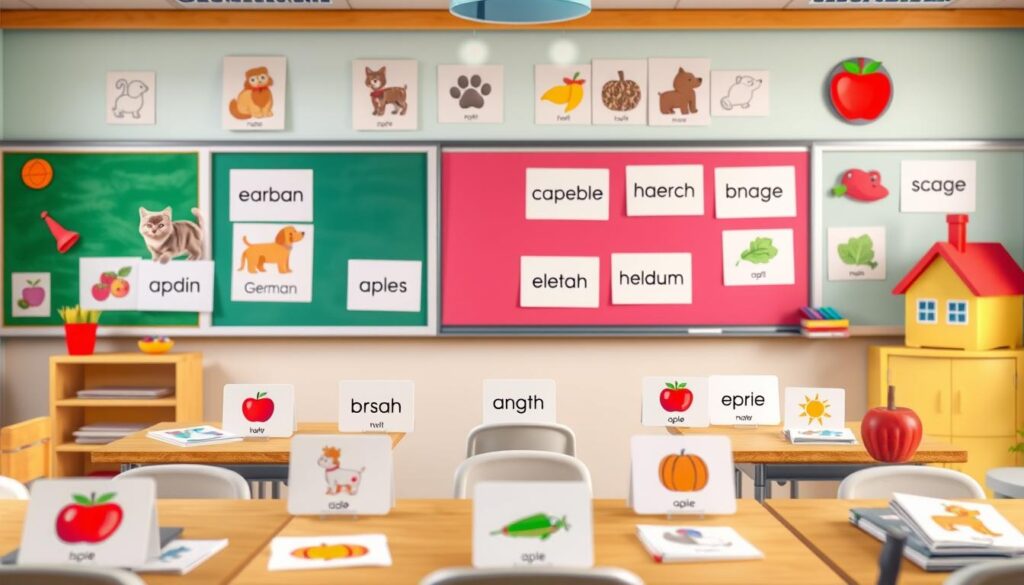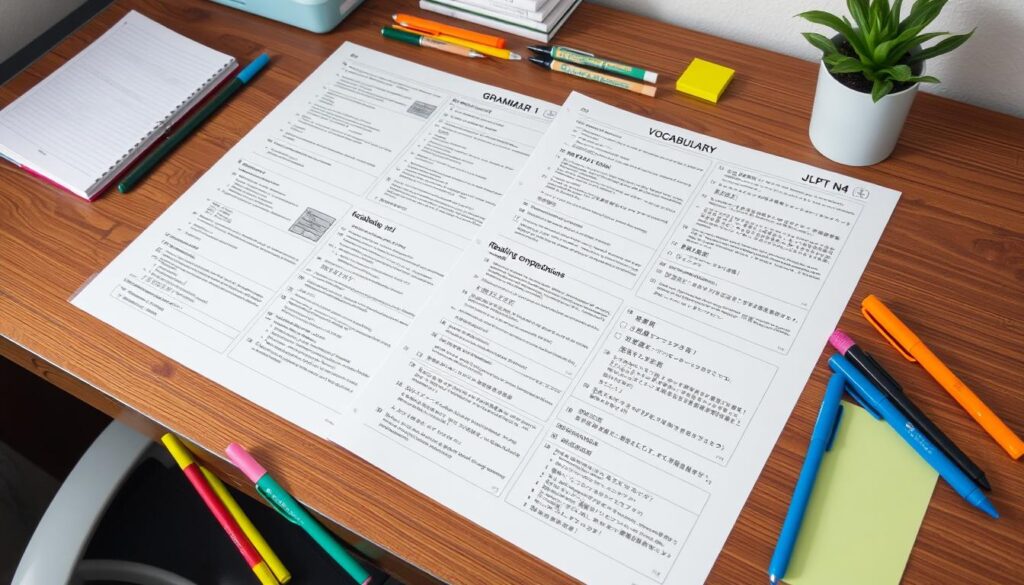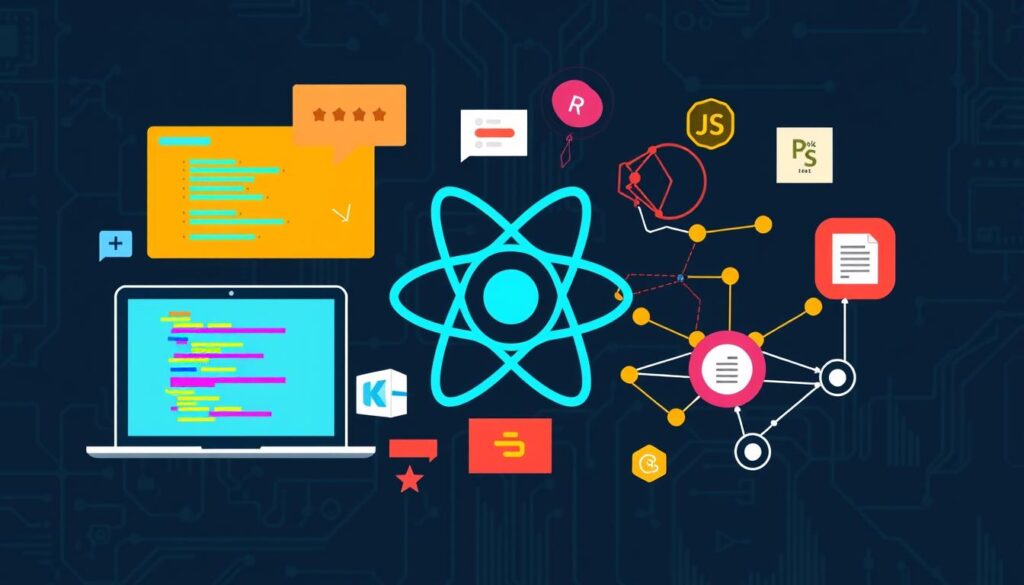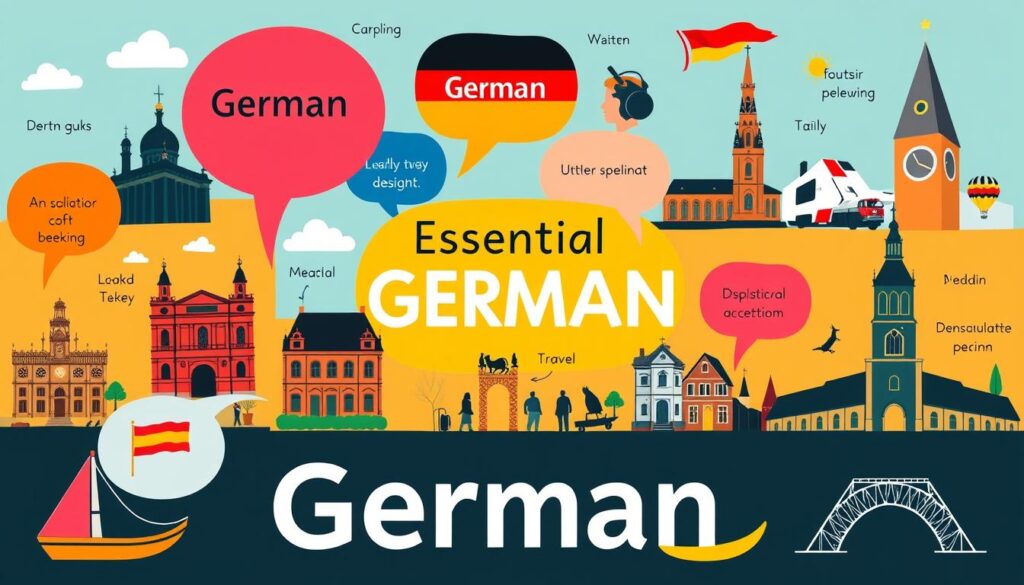Basic German words to start your learning Journey.
Have you ever been drawn to the German language’s sound? Maybe you want to talk with locals in a German city. Many people want to learn basic German for a rich cultural experience.This guide will teach you German basics. You’ll learn how to say words and common phrases. It’s great for trips to Germany or learning a new language. A vibrant classroom scene filled with colorful flashc Getting Started with German Language Basics Learning the basics of German is the first step to talking with others. You’ll learn common german phrases and essential german vocabulary. This part will show you how to start with German. Understanding German Pronunciation Rules German sounds different from other languages. But, with introductory german lessons, you’ll get better fast. We’ll cover the German alphabet and how to say words right. German Alphabet and Sound System The German alphabet has 26 letters. Knowing the alphabet helps you say words correctly. We’ll look at each letter’s sound and how vowels and consonants differ. Basic German Pronunciation Tips Good pronunciation is key to speaking German well. We’ll give you tips to improve. You’ll learn to roll your ‘r’s and stress words correctly. These tips will help you on your german language learning path. Basic German Words and Common Expressions Learning the foundational German words and simple German expressions is key. It helps you start speaking German well. This section will teach you basic words and phrases for talking every day. First, let’s learn some greetings. “Hallo” (HAH-loh) means “Hello.” “Guten Tag” (GOO-ten TAHG) is “Good day.” Say “Tschüss” (CHOOSS) for “Goodbye.” For a casual goodbye, say “Bis bald” (BEES BAHLD), which means “See you soon.” Numbers are important in German too. Learn “eins” (EYNS) for “one,” “zwei” (TSVAY) for “two,” and “drei” (DRAY) for “three.” Knowing these numbers helps you in daily life, like at restaurants or telling time. Knowing the days of the week and months is also helpful. “Montag” (MOAN-tahg) is Monday, and “Dienstag” (DEENS-tahg) is Tuesday. Months include “Januar” (YAH-noo-ahr) for January and “Dezember” (DEH-tseh-mber) for December. Start with these elementary German terms to improve your German. Practice using your new simple German expressions with native speakers or in learning environments. Simple German Grammar Rules for Everyday Communication Learning basic German grammar is key for talking every day. We’ll look at the main rules for sentence structure, verb changes, and noun genders. First, knowing the right word order is important. German uses a subject-object-verb (SOV) order. This might be different for English speakers. But, with practice, making simple sentences gets easier. We’ll show you how to build correct sentences. Then, we’ll talk about verb changes. German verbs change based on the subject, number, and person. Learning these changes helps you speak correctly in the present tense. But all of this can be covered with our guidance do check out our website Koderbox and also you can call us fo learning german, We teach from Basic to Advanced All the levels withinin mininal cost of course and free mento along with the course.










